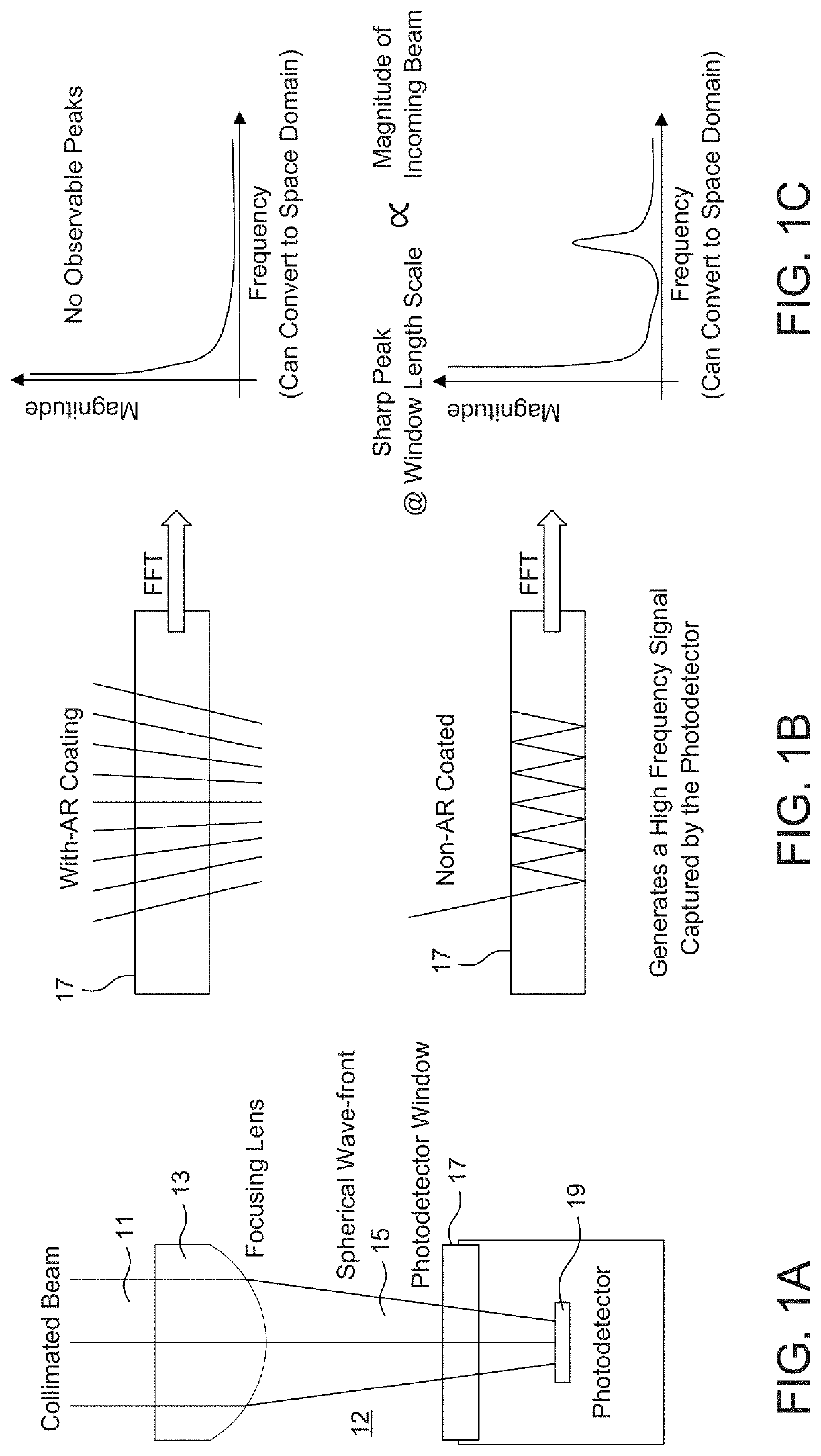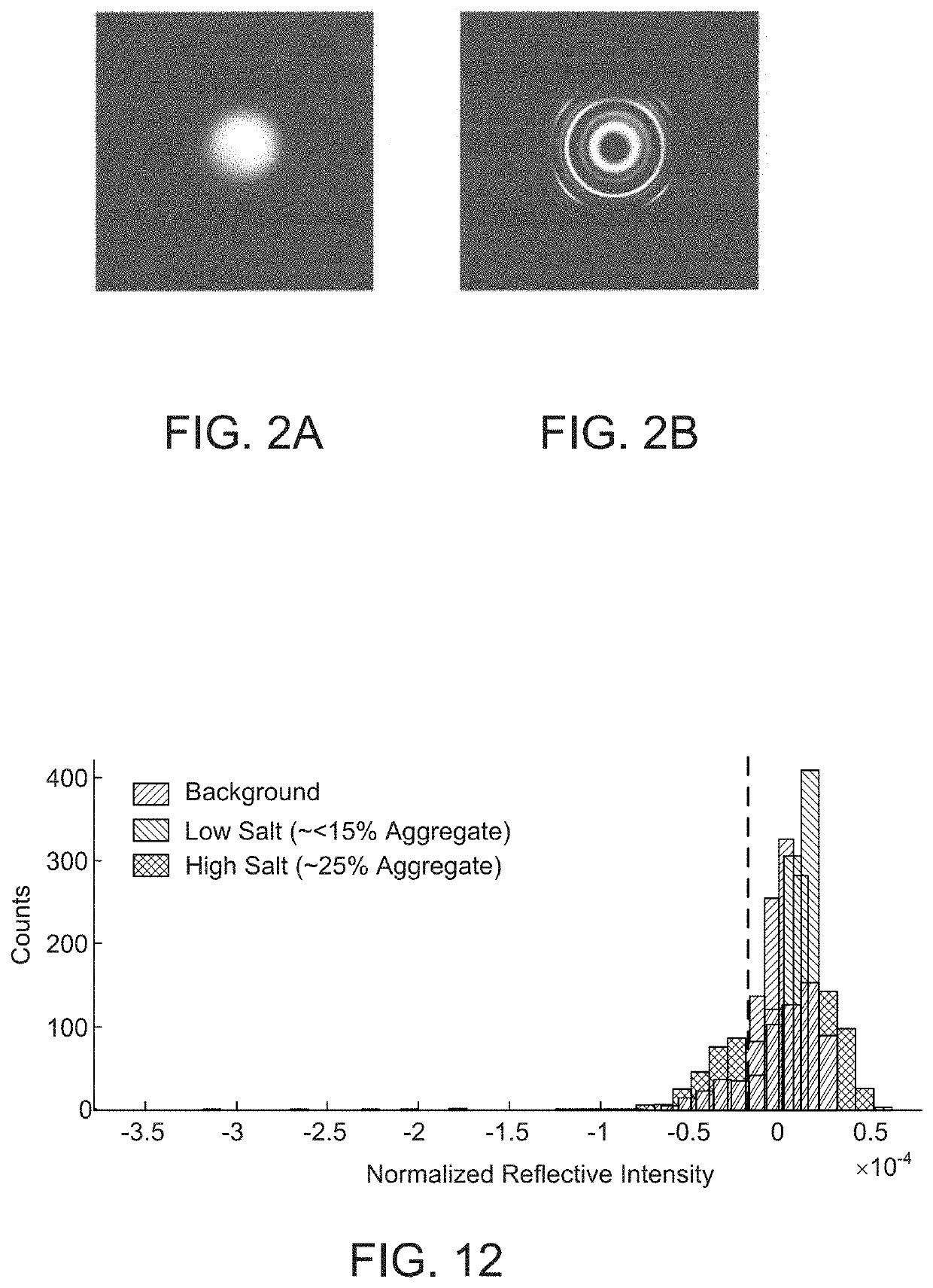Fabry Perot Interferometry for Measuring Cell Viability
a technology of interferometry and perots, which is applied in the field of fabry perot interferometry for measuring cell viability, can solve the problems of affecting the accuracy of cell viability measurement, and requiring expensive consumables and/or a long time to complete. achieve the effect of more accurate aggregate measuremen
- Summary
- Abstract
- Description
- Claims
- Application Information
AI Technical Summary
Benefits of technology
Problems solved by technology
Method used
Image
Examples
example 1
[0158]This feasibility experiment for detecting IgM in an IgG solution employed a “slow” scanning technique, over time intervals of at least one minute, typically over a time interval of a few, e.g., 3, 4, 5, 6, 7, 8, 9 or 2, 10 minutes. The protocol included preparing an aqueous solution of 1 milligram per milliliter (mg / mL) IgG in phosphate buffered saline (PBS), the IgG acting as purified monomer, followed by adding 1% of the heavier protein IgM (v / v also in PBS). The solution was recirculated through a flow cell and closed loop system, such as, for example a Hellma 1 mm pathlength flow cell (Hellma article #170-000-1-40) with a peristaltic pump (Cole-Palmer Masterflex®).
[0159]The number of detected events divided by the number of scans was expected to converge on the correct percentage of aggregates. Standard deviation (STD) was employed to tune event detection. STD×2.75 was determined as threshold for event detection (tuning) and was obtained empirically from 1% spiking runs. T...
example 2
[0162]As in the protocol described above, this feasibility study for detecting IgA in an aqueous IgG solution in PBS employed a solution containing 1 mg / mL of IgG, with IgG acting as a purified monomer. 1% of IgA (simulating a dimer) was added and the resulting solution was recirculated through a flow cell and closed loop system, as in Example 1. Once properly mixed, the number of detected events, divided by the total scans converged on the correct percentage of aggregates.
[0163]To investigate the robustness of the approach, the standard deviation employed was that determined in Example 1. The cumulative % aggregation as a function of time (in a “slow” scanning mode of several minutes) for the 1% IgA in a solution of 1 mg / mL IgG is presented in FIG. 21.
example 3
[0164]An aqueous solution of IgG (1 mg / mL) containing 1% IgA in PBS, prepared as described in Example 2, was used to investigate the feasibility of real time detection, measuring % aggregation over a time scale of a few seconds (e.g., 10 seconds). The known flowrates employed ranged between 1 and 5 mL / minute; the scan volume was 1 microliter; the scan rate was 1 scan per 0.1 seconds. As seen in FIG. 22, the plots for real-time aggregate % for the various flow rates asymptotically approached the known concentration of 1% IgA.
PUM
 Login to View More
Login to View More Abstract
Description
Claims
Application Information
 Login to View More
Login to View More - R&D
- Intellectual Property
- Life Sciences
- Materials
- Tech Scout
- Unparalleled Data Quality
- Higher Quality Content
- 60% Fewer Hallucinations
Browse by: Latest US Patents, China's latest patents, Technical Efficacy Thesaurus, Application Domain, Technology Topic, Popular Technical Reports.
© 2025 PatSnap. All rights reserved.Legal|Privacy policy|Modern Slavery Act Transparency Statement|Sitemap|About US| Contact US: help@patsnap.com



